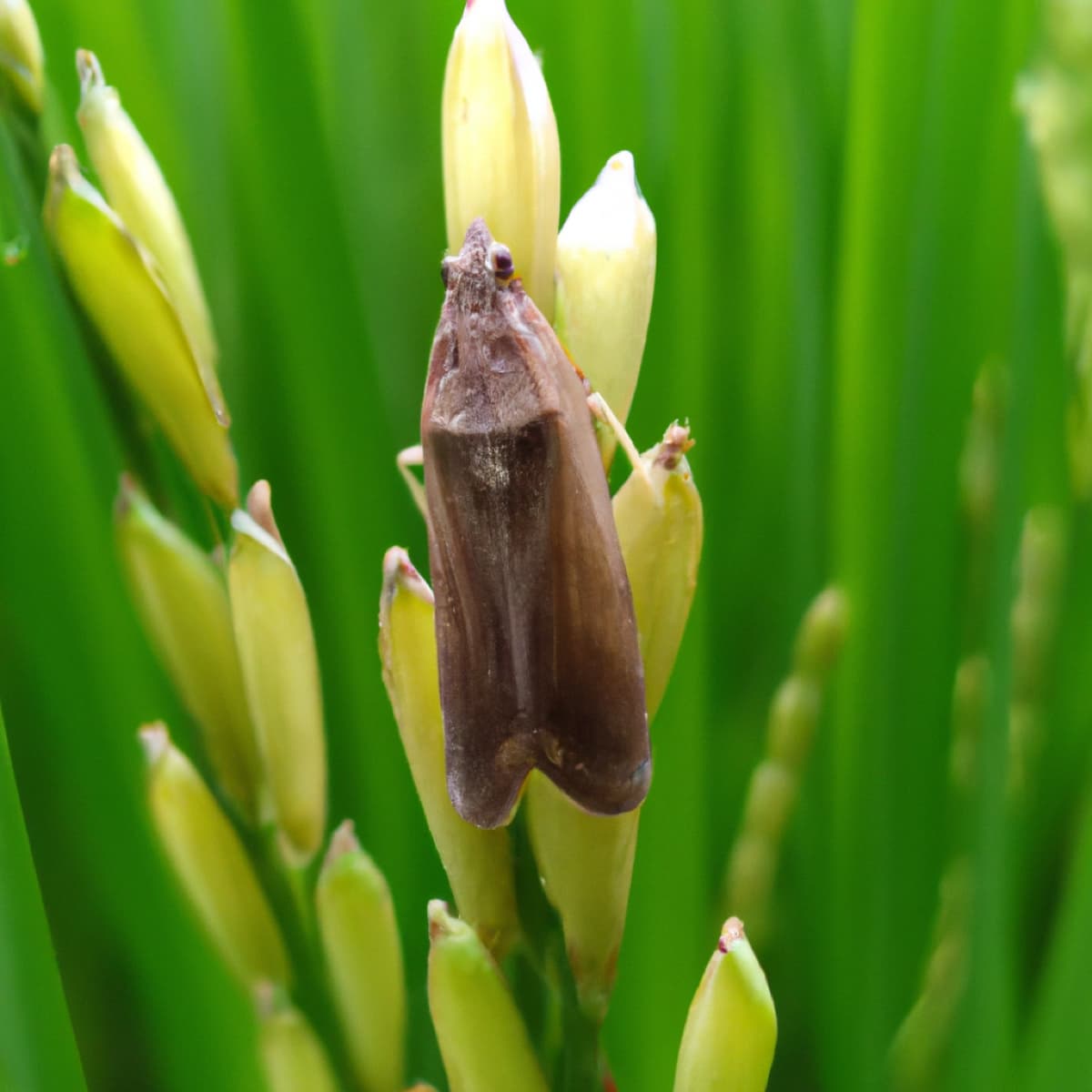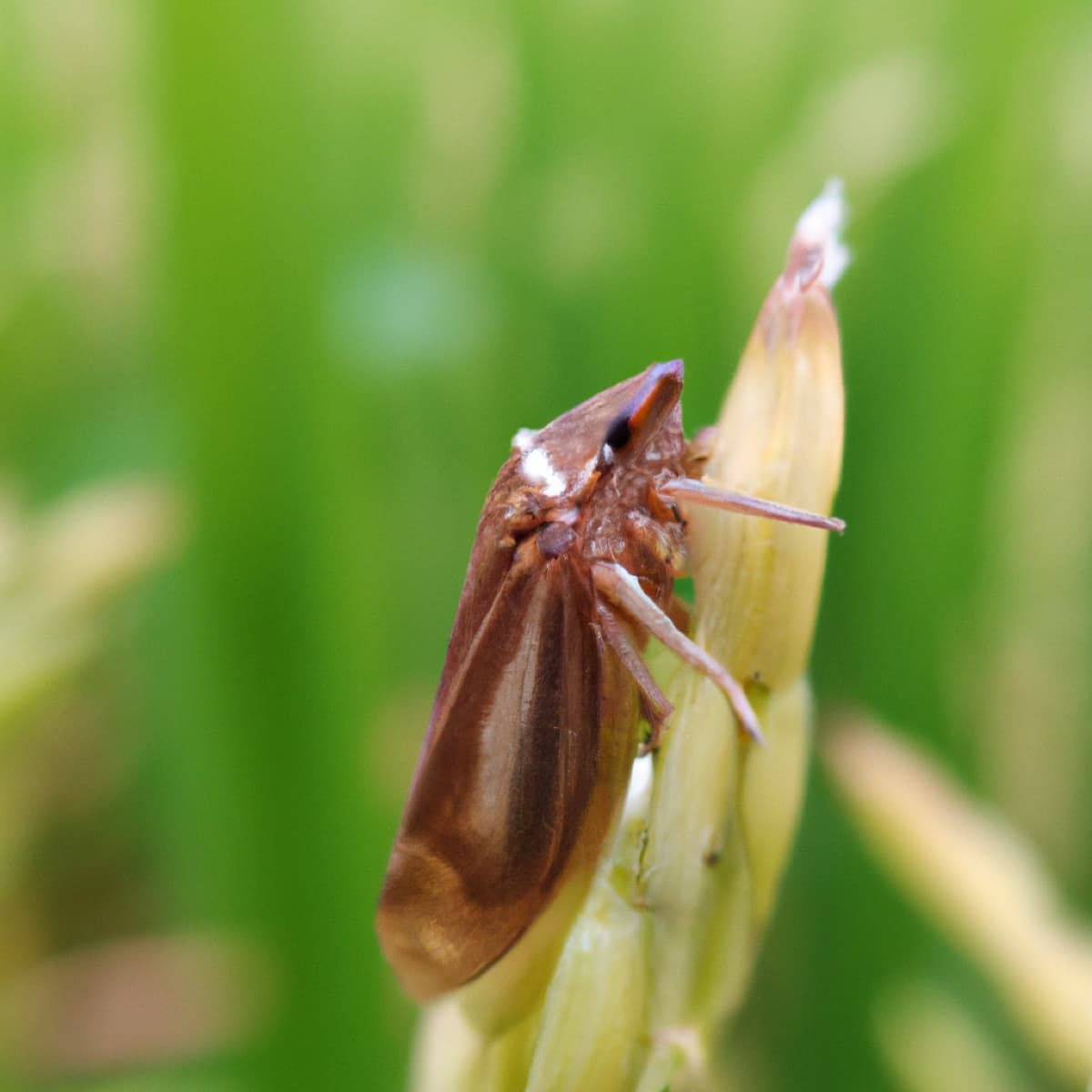The brown plant hopper (BPH) is a common pest that affects rice crops, causing significant damage to yield and quality. It is a small, winged insect that feeds on the sap of rice plants, leading to the plant’s wilting, stunting, and, ultimately, death. The BPH is known for its ability to reproduce quickly and adapt to various environmental conditions, making it a challenging pest to control.

To mitigate the damage caused by the BPH, farmers often resort to the use of pesticides. However, choosing the right pesticide is crucial as some can harm the environment and human health. Hence, selecting a pesticide that is effective against the BPH and has a minimal negative impact on the ecosystem is essential.
Brown Plant Hopper in Paddy and Recommended Pesticides
Symptoms of Brown Plant Hopper Disease
- Brown plant hopper infestation in paddy rice can cause hopper burn, which leads to yellowing, browning, and drying of plants.
- Circular patches of drying and lodging of matured plants are also common symptoms of brown plant hopper infestation.
- Nymphs and adults of the brown plant hopper often gather at the base of the plant above the water level.
- The affected plant dries up and gives a scorched appearance known as a hopper burn.
- Brown plant hopper is a vector of various rice diseases, such as grassy stunt, ragged stunt, and wilted stunt.
- Hopper burn caused by brown plant hopper infestation is characterized by the presence of visible sooty molds at the bases of the rice plant. Virus-infected plants may also be found.
The Life cycle of Brown Plant Hopper
- Egg: The female lays 2 to 12 eggs in a group in the leaf sheath near the base of the plant or in the ventral midribs of leaf blades. The eggs are white, transparent, slender, cylindrical, curved, and arranged in two rows. The female secretes a dome-shaped egg plug that covers the eggs, leaving only the tips protruding from the plant surface.
- Nymph: The freshly hatched nymph is cottony white and 0.6 mm long. It undergoes several molts and turns purple-brown, reaching a length of 3.0 mm in the fifth instar.
- Adult: The adult hopper is 4.5-5.0 mm long and has a yellowish-brown to dark-brown body. The wings are subhyaline with a dull yellowish tint. It has two distinct wing morphs: macropterous (long-winged) and brachypterous (short-winged).
In case you missed it: Paddy/Rice Production Guide: A Step-By-Step Cultivation Practices

Detection & Inspection of Brown Plant Hopper
Detecting and inspecting Brown Plant Hopper (BPH) infestation is crucial for effective pest management in rice fields. These methods can be used for the detection and inspection of BPH:
- Visual observation: Look for BPH nymphs and adults at the base of plants where it is shady and humid. Nymphs are often found near the roots, while adults congregate on the plant’s upper parts.
- Presence of sooty mold: Check for blackish-brown sooty mold fungi that often accompany large numbers of BPH. These fungi grow on the honeydew excreted by the insects, and their presence is a clear indicator of BPH infestation.
- Insect count: Count the number of BPH per tiller to determine the level of infestation. More than 3-5 insects per tiller are considered high and require more intensive observation and possibly insecticide treatment.
- Light traps: Install light traps with incandescent light at 1-2 meters height @ 4/acre to monitor the BPH population.
Recommended Pesticides to Control Brown Plant Hopper
- The Economic Threshold Level (ETL) for BPH management in rice is 2/tiller when one spider/hill is present, 1/tiller when spiders are absent, and two hoppers/tiller when one spider/hill is present.
- Avoid using insecticides that may cause resurgence, such as synthetic pyrethroids, methyl parathion, fenthion, and quinalphos.
- Use one of the following insecticides for BPH management in rice: Phosphamidon 40 SL 1000 ml/ha, Phosalone 35 EC 1500 ml/ha, Carbaryl 10 D 25 kg/ha, Methyl demeton 25 EC 1000 ml/ha, Acephate 75 SP 625 gm/ha, Chlorpyriphos 20 EC 1250 ml/ha, Carbofuran 3 G 17.5 kg/ha, or Dichlorvos 76 WSC 350 ml/ha.
- Alternatively, botanical methods can be used for BPH management in rice, such as Neem oil 3% 15 lit/ha, Iluppai oil 6% 30 lit/ha, or Neem seed kernel extract 5% 25 kg/ha.
- At the nursery stage, monocrotophos 35 EC can be sprayed at 2ml/l (624ml/acre).
- Granular insecticides like phorate 10G at 4kg/acre or carbofuran 3G at 10kg/acre can be applied in a thin film of water.
- Imidacloprid 200 SL at 0.5m (thiamethoxam), thiamethoxam 25WG at 0.5g (125kg/acre), phoslone 35 EC at 2ml/l (800ml/acre) water, or quinolphos 5G at 12kg/acre can also be sprayed for controlling Brown Plant Hopper in paddy.
Preventive Measures for Control of Brown Plant Hopper Disease
- Use locally recommended resistant rice varieties if available.
- Synchronize the planting of rice fields in the same area to avoid outbreaks.
- Provide 20 cm wide alleyways every 2 meters in the east-west direction during Kharif and north-south direction in rabi.
- Regularly inspect the seedbed or field for insects on stems and the water surface.
- Use a net to sweep small seedbeds to catch the brown plant hopper.
- Remove weeds from the fields and surrounding areas frequently.
- Avoid excessive use of nitrogen fertilizers.
- Install light traps, such as electric bulbs or kerosene lamps, near a light-colored wall or over a pan of water (5/acre), and 20 yellow sticky traps.
- Avoid using non-selective insecticides to protect beneficial insects.
- Adopt alternate wetting and drying of the field to drown the brown plant hopper.
In case you missed it: 1 Acre Paddy/Rice Cultivation Project Report in India: Production Cost and Profit

Conclusion
The brown plant hopper (BPH) is a challenging pest that can cause significant damage to rice crops. To mitigate the damage, farmers often use pesticides. However, choosing the right pesticide is crucial to minimize the negative impact on the environment and human health. This article has discussed some of the recommended pesticides for controlling BPH in paddy, including their effectiveness, application methods, and environmental impact. Farmers can use this information to make informed decisions about the use of pesticides and ultimately ensure a sustainable and healthy rice crop.
- Ultimate Guide to Ossabaw Island Hog: Breeding, Raising, Diet, and Care
- Ultimate Guide to Juliana Pig: Raising Facts, Size, Diet, Care, and Lifespan
- Raising Lleyn Sheep: Disadvantages, Price, Uses, Characteristics, and Care
- Ultimate Guide to Meishan Pig: Breed Facts, Breeding, Raising, and Care
- Ultimate Guide to Teacup Pigs: Raising, Diet, Lifespan, Cost, and Care
- Guide to Raising Poll Dorset Sheep: Facts, Profile, Characteristics, Uses, and Care
- Ultimate Guide to Bighorn Sheep: Characteristics, Diet, Lifespan, Breeding, and Lifecycle
- Ultimate Guide to Raising Katahdin Sheep: Farming Facts, Breed Profile, Uses, and Care
- Ultimate Guide to Raising Oreo Cows: Belted Galloways Farming Facts, Profile, Uses, and Care
Thank you for your information and guidance to the farmers